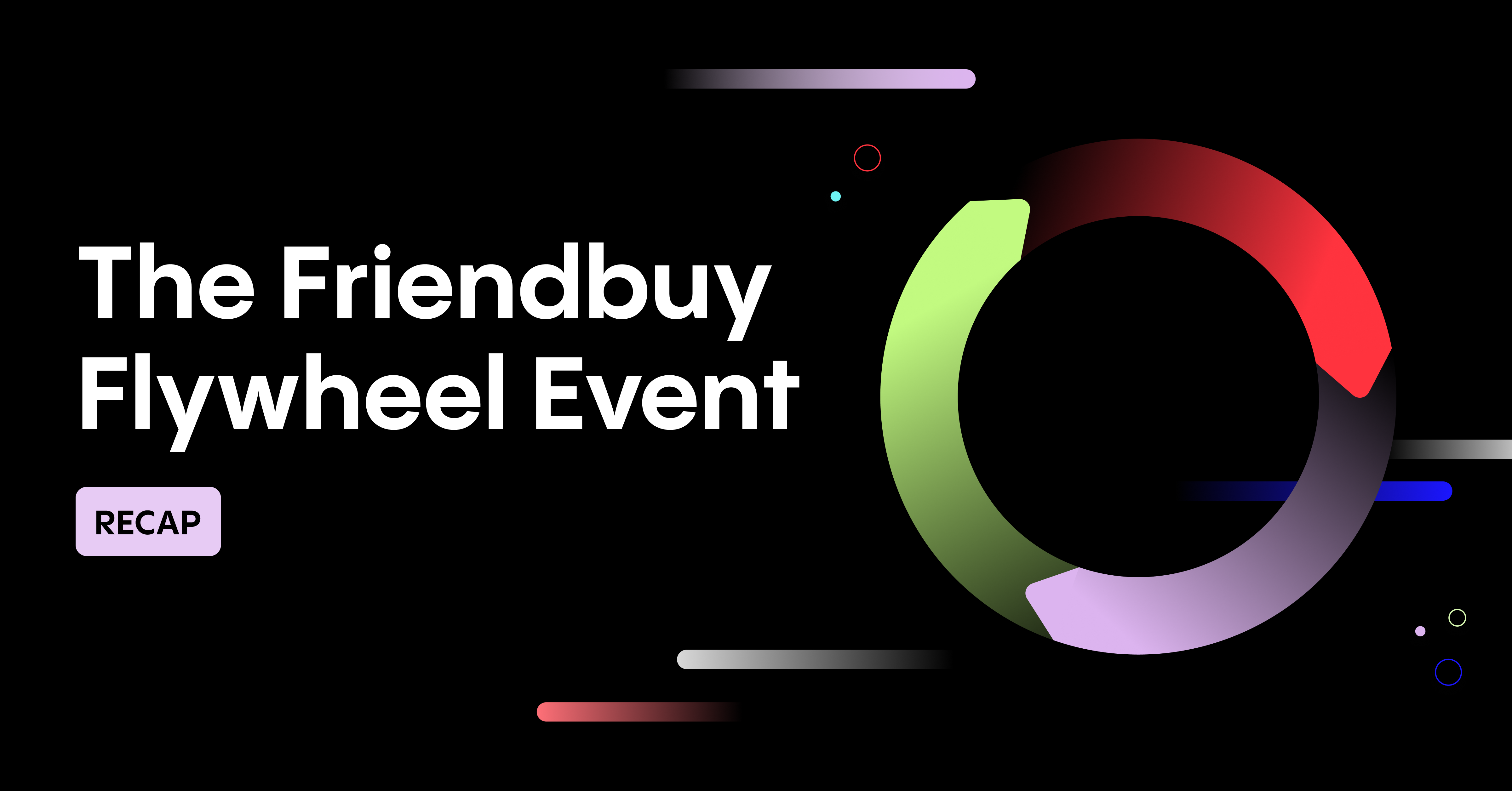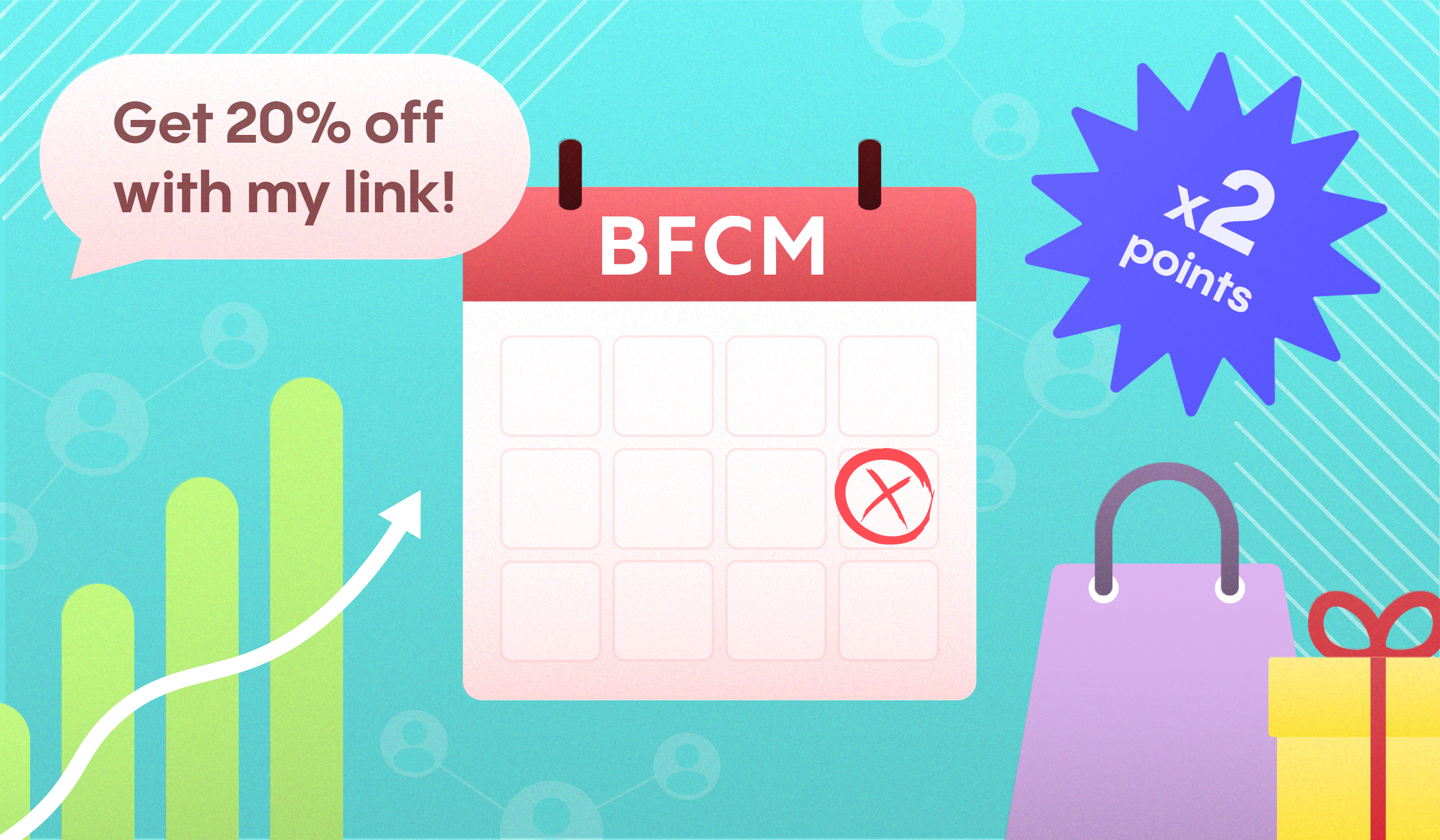Virality. It's the stuff of marketing dreams. Whether it’s an original piece of content, a component in a broader marketing campaign, or even a hashtag on social media, we all want our efforts to bloom and grow beyond our wildest expectations. In a world where ROI is measured within an inch of its life at times, who wouldn’t want to show an exponential return on investment?
Heather Locklear set the gold standard definition of virality in 1982 with this line in her Faberge Organics commercial:
“It was so good, I told two friends about it. And they told two friends. And so on, and so on, and so on!”
“Going viral” is a result everyone wants, and we can discuss examples of how viral marketing works all day, but here’s the real question – how do you make it happen for your product / service / campaign? How do you create internet hype in a tangible, scalable way? Yankelovich, a market research firm, estimates that a person living in a city sees up to 5,000 advertising messages a day – how can you ensure your message cuts through the clutter?
Plenty of marketing bloggers and content strategists have attempted to identify best practices for creating content that goes viral. I know because I’ve read all the articles. Most identify the best viral marketing examples and reverse engineer a list of lessons to be learned from them. But can those strategies be repeated to get the same results?
Is there really such a thing as viral marketing?
Don't worry, I'll go through a few successful viral campaigns that your business can learn from to raise awareness for the brand. And then I'll also go over a digital marketing strategy that is even better at raising awareness.
The Origin Story of a Legendary Viral Advertising Campaign
Consider one of the best examples of virality – the ALS Ice Bucket Challenge.

I won’t even bother to explain it because I know you’ve heard of it. The ALS Ice Bucket Challenge started as a grassroots idea that spread like wildfire. It was ubiquitous – people talked about it online and offline – at the water cooler, at the dinner table, and not all viral campaigns are on social media. 17 million original videos were produced and The ALS Association raised over $115 Million in less than two months.
How did they launch it in the beginning? Whose brilliant idea was it?
There are two competing origin stories for the Ice Bucket Challenge. Depending on who you talk to, it was the brainchild of former Boston College baseball captain and ALS patient Peter Frates or professional golfer Chris Kennedy.
One thing is for sure – it wasn’t invented by a marketer. The concept wasn’t pitched at a team meeting, campaign titles and calls to action weren’t A/B tested, and there were no UTM parameters set up to track traffic sources when sharing. It just went viral.
So can we learn anything useful from inspecting one of the most successful viral marketing campaigns in history? I suppose – start with a unique idea, make it easy to share, evoke positive emotions, etc. – but these takeaways aren’t that unique or actionable.
It’s difficult to boil this viral campaign down to repeatable steps or best practices because it was an example of true virality. The ALS Association didn’t need to feed the beast to keep the word-of-mouth going – it fed itself! This campaign was an outlier, not the norm. If you give your campaign the goal of going viral “like the Ice Bucket Challenge,” you may just find yourself staring at lackluster results, wishing you had a bucket of ice to dump over your head.
(The ALS Association plans to re-launch the Ice Bucket Challenge every August. Can they recapture the excitement and repeat their original viral spread? We’ll see...)
Marketers Create The Content, Audiences Create The Virality
So if there’s no way to guarantee a result with your viral marketing efforts, is the most you can hope for an educated guess? Is there a tried and true formula for ensuring viral marketing success? Let’s take a look at what the professionals say about viral marketing.
One of the earliest mentions of viral marketing comes from Harvard Business School faculty member Jeffrey Rayport:
“Think of a virus as the ultimate marketing program. When it comes to getting a message out with little time, minimal budgets, and maximum effect, nothing on earth beats a virus. Every marketer aims to have a dramatic impact on thinking and behavior in a target market; every successful virus does exactly that.”
Rayport identified six rules for succeeding at viral marketing in his 1996 article in Fast Company. Jonah Berger, a marketing professor at the Wharton School at the University of Pennsylvania asserts six completely different principles behind virality in his New York Times bestseller Contagious: Why Things Catch On.
Rand Fishkin of Moz tackled this topic by describing ways to increase the odds of content going viral. But even Rand admits at the end of his Whiteboard Friday:
“Test, test, test. If you're sharing content and producing content on a regular basis, you will figure out the right times to share, who you can start seeding things with, who's reliable and helps you get that content out there, what topics work well, what sorts of headlines work well for your audience. It's going to be different for everyone.”
Even Upworthy, the kings of viral content online, state on the front page of their case study The Sweet Science of Virality:
“You Are Bad At It. We Are Less Bad.”
Here’s the common thread I see – companies can only control the creation of the content, audiences create the virality. You can’t control the organic spread – it either happens or it doesn’t. All you can do is follow a set of best practices when creating your content, launch and promote it, and hope for the best.
The True Target for Viral Marketing Campaigns
“So that’s it?” you’re thinking. “There’s no way to plan a successful buzz marketing campaign?”
I would suggest you might shift gears a bit and think about it this way – the idea that something will impact audiences far and wide actually contradicts what we’ve been taught as marketers (understand your target audience, focus your efforts, target segments, evaluate and repeat). We want everything to be measurable and scalable on top of being shareable. Perhaps the key to a successful viral marketing campaign is focus on measuring the right thing.
What was the goal of your last viral marketing campaign? Views? Clicks? Shares? Leads? You’ll make yourself crazy if the final numbers don’t meet your expectations, when the truth is your results aren’t really within your control because there’s no way to scale and optimize virality.
Besides which, if you’re an ecommerce brand without a brick and mortar component, you probably don’t have the money and resources to pull off a viral marketing stunt like this:
How can an ecommerce business hope to produce something that can compete for the attention of online eyeballs?
Work smarter, not harder. Rather than measuring your viral marketing campaign success by the numbers, consider a different set of expectations. Measure your top viral marketing campaigns and efforts by the ratio of effort to result.
Let’s take a look at one ecommerce brand that not only played by a different set of rules in their viral marketing campaign, they set the benchmark for ecommerce viral marketing success.
How Dollar Shave Club Launched Their Brand in One Minute and Thirty-Four Seconds
You’ve all seen this video too:
When Dollar Shave Club launched this promotional video in March 2012, it went viral so fast that their server crashed within the first hour. They had to scramble to pack the 12,000 orders they received within the first 48 hours. Once they got a handle on that, they were on their way. In just a few days, they went from a cool startup idea to a revenue-generating brand with unstoppable buzz.
And when you consider the ratio of effort to result, it’s definitely tipped in their favor. We all want our viral marketing efforts to be like Dollar Shave Club’s –
- Inexpensive – This isn’t a Super Bowl commercial extravaganza. Founder and CEO Michael Dubin shot the video in his own warehouse and starred in it himself.
- Buzz-worthy – Come on, it’s hilarious. Did you see that machete? Who wouldn’t want to share it?
- Long-lasting Impact – The video never needs to be updated because the message is evergreen. To date, this video has racked up over 19 million views.
But building a successful viral marketing campaign involves more than just making a funny video and hoping people will share it. If you want to put your brand on the map and make it a household name through viral marketing, start by taking the right lessons from the people who did it well.
Here's Why The Best Are The Best
Even though it can't give us the secret sauce that takes something from popular to viral, it's still worth inspecting the best viral marketing examples for actionable takeaways. Don't attempt to duplicate their tactics, but rather learn from the logic underneath their success as you consider all the different angles from which you can approach a digital marketing campaign.
Dollar Shave Club taps into a commonality we all share
How can you make a marketing message stand out in a crowd? That’s like asking how to make a product that everyone will buy. You don’t have control over how something is received in a widespread audience.
So instead of trying to stand out, make your message fit in. Identify the commonality we all share where your product resonates and direct your message there.
That’s what the original Dollar Shave Club video does so well – it taps into the common truth that we all just want to save money.
Poo~Pourri proves a little tongue in cheek goes a long way
It’s the Internet, not Park Avenue. You can use oddball humor and get excellent results. Look at Poo~Pourri, an ecommerce brand that launched its line of toilet deodorizers with this viral video:
This campaign takes a potentially embarrassing sales pitch and uses comedy to make the message feel casual and accessible. And with over 33 million views on YouTube so far, I’d say this angle worked.
Dove and Chipotle pack an emotional punch
While it’s true that the best viral campaigns are often humorous in nature and associated with emotions of surprise, happiness, and delight, it doesn’t always have to be that way.
Dove’s Real Beauty videos stir up feelings of sadness, heartache, and often make people cry before ending on an optimistic note. And what brand is associated with that optimism? Dove.
Chipotle tugged on the heartstrings with their Scarecrow animated short film and mobile game, a cross-platform campaign that presented the emotional story of a disillusioned scarecrow who finds hope in fresh ingredients (video no longer available).
Red Bull and OK Go keep it simple and make it elaborate at the same time
Red Bull sponsored a stunt where daredevil Felix Baumgartner took a supersonic freefall from the edge of the stratosphere. Craziness!
What does this stunt have to do with an energy drink? Not a thing. The elaborateness of the stunt was what made the impact – everyone was talking about the stunt, and in turn, about Red Bull.
But as we said earlier, a marketing campaign doesn’t have to be expensive to be impressive. Look at this early music video by alternative rock band OK Go:
This is elaborate in effort, not expense. The results were monumental – the original video went viral with over 50 Million views and gave rise to a band that otherwise might have been lost in the ocean of rock bands trying to hit it big.
Elf Yourself makes personalized randomness fun
Elf Yourself was a holiday-themed video microsite launched by OfficeMax in 2006. Users uploaded a picture of a face and a shareable music video of that face on the body of a dancing elf was instantly generated. Here’s an example of a first generation video:
These videos had absolutely nothing to do with office products, but they spread like wildfire and OfficeMax reaped the financial benefits of spreading tons of holiday cheer. (I may have made a dozen or so with my friends and family's faces.)
The personalized, humorous nature of this idea has since been copied a hundred times over with microsites like Mad Men Yourself or Simpsonize Me.
Virality is Hard and Unpredictable. Word of Mouth Marketing is Totally Doable.
Here's my counterpoint to the "go big or go home" mentality of viral marketing - connecting people to your brand is a marathon, not a sprint. You can try to be a one hit wonder or you can be Tom Petty, who's been consistently delivering great songs since the 1970s and has sold more albums than Justin Timberlake. (It's true - look it up!)
Virality will always be the goal and the hope – I get it – but consider this theory...
Generating virality for ecommerce brands can be achieved through a collection of micro actions rather than a single, sweeping action that hits it big.
Instead of trying to figure out how to catch lightning in a bottle and shooting for an epic number of clicks, views, and shares, choose instead to focus your efforts on word of mouth marketing, a collection of marketing strategies and tactics that reach for the following goals --
1. Inspire surprise and delight
We’ve seen our subscription box clients like NatureBox, Try The World, and LootCrate expanding exponentially because their business model is built on surprise and delight. Every month, a new package of goodies arrive on customers’ doorsteps. People share pictures of their goods on their social media platforms or create unboxing videos, which generates interested responses from friends and family.
Dollar Shave Club continues their viral dominance by encouraging their users to share unboxing pictures via multiple social media channels, rewarding the best picture tagged with #UnboxDSC with a free t-shirt.

These customers are spreading the word for them. It’s honest to goodness virality – not the kind that makes an overnight splash, but the kind that builds incrementally over time.
Implementing a solid referral marketing program just amplifies surprise and delight the customer base by rewarding people for sharing, turning customers into brand advocates and incentivizing them to spread the word.
2. Create a connection through stories
The Tile App strengthens their brand by sharing incredible stories of their product at work. With striking headlines like “Stolen Car Recovered with Tile” and “How I Found my Lost Keys in the Piano,” their blog is filled with read dozens of real-life stories of how everyday people recovered their most important possessions with the help of their Bluetooth tracking chip and accompanying app.

One story even describes how the Tile App helped a customer find her keys and wallet in a landfill. Talk about a needle in a haystack! These compelling true stories strengthen the Tile App’s value proposition better than any produced advertising campaign possibly could.
3. Start an ongoing conversation
Giveaways and sales can create a burst of excitement, but the buzz often doesn’t last beyond the event itself. When creating a promotion, focus on the long-term potential and concentrate on starting conversations with customers, both current and potential. Have something to say and something worth sharing – it’s the discussion that will continue to generate results.
At a recent startup fair in Los Angeles, our client MeUndies featured this booth --

If attendees were willing to give up the underwear they had on that moment, MeUndies would give them a free pair of their underwear in exchange.
The offer was too good to pass up. I gave it a try:

(Yes, there was a changing booth.)
This was a very clever "free sample" campaign but one that's quite different than one you'd see in Costco on a Saturday morning. And it worked very well – their booth was one of the biggest hits of the startup fair. Every person who took the challenge could immediately experience their brand and see for themselves if they were indeed the world’s most comfortable underwear. (I'm happy to report that they are – I'm officially a fan!)
When planning a promotion, focus on inviting your customers to experience your product’s best features and they’ll talk about your brand well past the promotion dates.
Innovation is Merely the Cost of Entry
Don’t try to think outside the box – throw the box away. Peter Diamandis, an engineer and entrepreneur best known for founding the X Prize Foundation, has expressed this approach to innovation as well:
“True innovation really comes from perpendicular thinking. ... If you want to achieve a large-scale breakthrough you have to be willing to take big risks. ... The day before something is a breakthrough it’s a crazy idea. If it wasn’t, then it would be an incremental improvement.”
In other words, shoot for the moon. Give yourself a huge goal that’s beyond anything you’ve ever achieved and you’ll be forced to throw out everything you’ve done before and truly innovate an original idea. Just know that while you're aiming to be the next viral sensation, you can still hedge your bets on some straight-up, positive word of mouth.










.avif)

